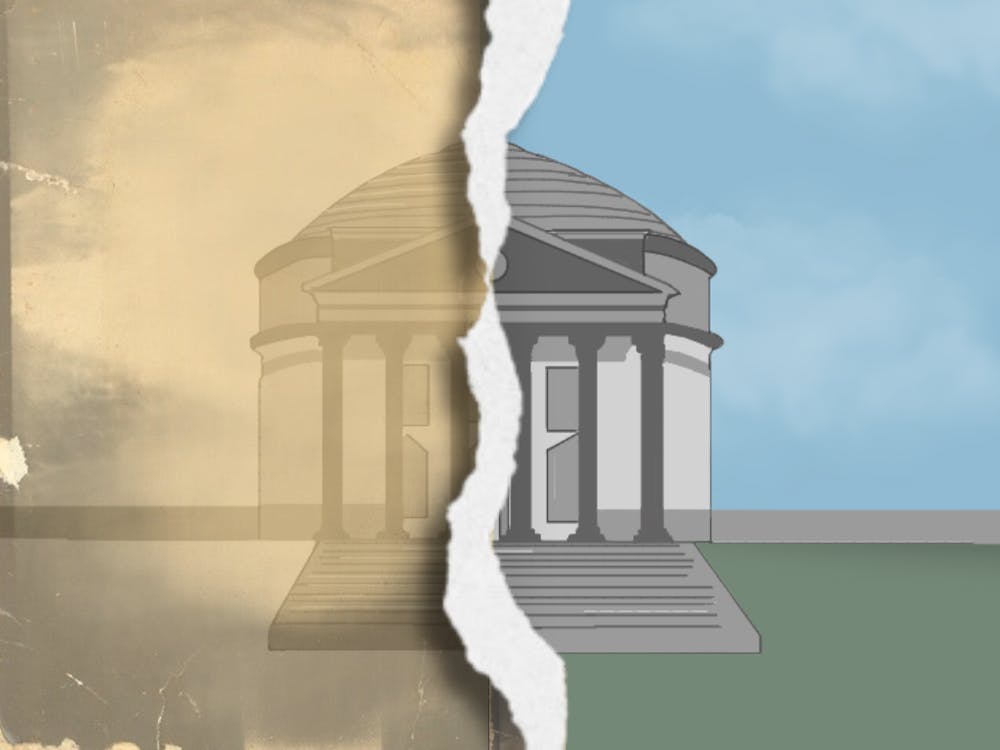IT HAPPENS after spending an entire academic year on Grounds, traveling entirely by foot and by bus. Students from New York City or the D.C. area will return to a public transportation system that is extensive and easy to use, but the rest of us will get home to inevitably ask ourselves, "How am I supposed to get around now?" Driving is the first solution, but driving presents drawbacks like heavy traffic, finding a place to park, and the issue of always having the car nearby. The best solution lies in extensive mass transit -- a solution most of America ignores.
The primary cause of this failure stems from poor planning. Americans love the suburbs. Unfortunately, this conflicts with the love of convenient, green travel. Suburbs don't make an optimum environment for mass transit systems because people are too far apart. This situation means that subways require more stops to be pedestrian-accessible. In addition, retail must be located nearby to keep people on foot, bus and train at all times rather than just for the commute to and from work. The development of so many stations and retail areas would both ruin the suburban atmosphere and slow the transportation system itself.
The answer is more tightly packed housing located near shopping areas and transit stations, which does not necessarily imply a totally urban atmosphere. A notable example is close at hand; much of Northern Virginia is spaced enough to seem like a suburb but close enough to produce one of the most successful residential mass transit projects in the nation. City planners must begin organizing and preparing a coherent transportation system before their areas become concentrated centers surrounded by far-reaching urban sprawl. What they lack is motivation.
The beauty of a well-organized transportation system is manifold. From an environmental standpoint, an effective and widely used mass transit system decreases the number of drivers and reduces gas consumption and limits automobile pollution. Such a system also lowers traffic, making travel easier, faster and more environmentally friendly for individuals for whom driving is the only option.
By using mass transit and conserving gasoline, travelers save money. The cost of bus or train fare in an established system is tiny compared to the likely cost of gasoline to arrive at the same destination by car. Households can also save money by buying fewer cars. If public transportation is used for most trips, families will no longer feel the desire to own a vehicle for each driver.
In addition to saving money, travelers on busses and subways save time. Aside from avoiding heavy road traffic, passengers can benefit from the time they spend in transport since they are not required to operate the vehicle. This can give busy individuals time to read the paper, make a phone call, or organize the day's schedule, for example. For a ten minute ride, this benefit is negligible. But for those who face commutes on the hour scale, being a passenger can recover a significant part of the day.
Mass transportation also offers increased transportation safety for travelers. The risks of automobile accidents and drunk drivers are eliminated on a train and decreased on a bus. The problem of drunk, tired, or otherwise dangerous drivers is also partially solved by offering an easier and safer mode of transportation to those people. The traveler is also spared the risk of receiving a traffic citation. This may seem a small benefit, but is of note for those drivers likely to commit traffic violations.
With such a long list of associated benefits for the environment and travelers, a transportation system should earn a place on the agenda right after public safety and education. Unfortunately, voters aren't convinced or motivated enough to make transportation a serious issue rather than a simple false promise. Changing this is like changing any political issue -- voters must raise questions and pay attention to changes.
Through a tremendous lack of foresight, most of the United States has gone without any serious attention to public transportation. Voters must begin to raise the issue and planners must prioritize the issue before it worsens as cities sprawl and energy becomes more of an issue. The citizen needs to realize what is in his best interest, and the leader needs to listen before the burden becomes unbearable for both.
Jason Shore's column appears Fridays in The Cavalier Daily. He can be reached at jshore@virginia.edu.






